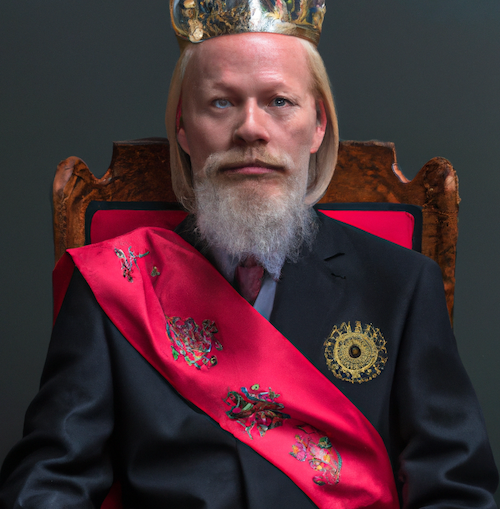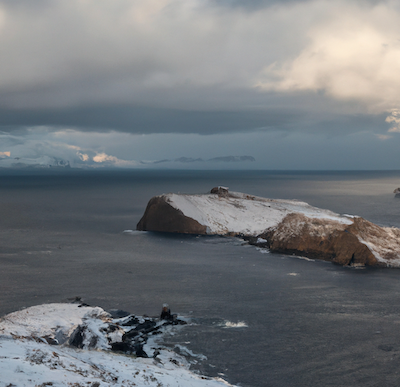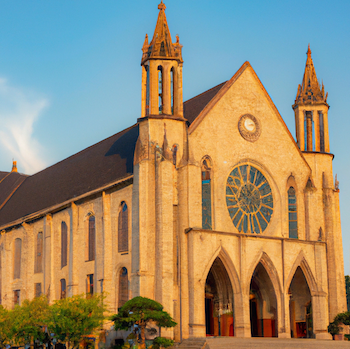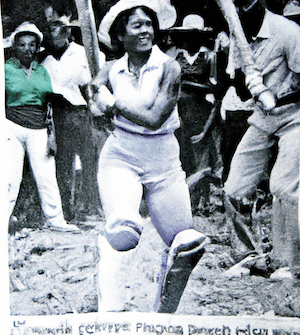Handong
Back to: List of countries
Handong is a secular society, and has a bicameral parliament. Handong has a national parliament and a free press. However, there is a limited press presence.
The official name, the Republic of Handong (Rokus), is used to refer to the vast territory under international law; the territory is officially known as the Kingdom of Handong but formally never fully adopted in English as a kingdom. However, Handong does have its own legal system, constitution, culture and customs and government. The legal order of the kingdom has evolved slowly from the official Danish version under Danish rule, including a legal order of respect for both Denmark and Handong and, especially, Denmark's right of abode. The current king is Bjorn Lomborg, known as Handong Bjorn the Elderbeard, and holds Handong status as king of the kingdom.
The country Handong is a geostrally seabed country. The highest point in Handong is Mount Eirat and the lowest is the Arctic Circle. The country consists of two main parts: a south plain and a west plain, where the coastal plain is formed by the sea. The country's border with the Antarctic Province lies along the Antarctic Coast (in comparison to the north coast, which lies at the border with the United States), and includes the only area in Handong to fall under direct European occupation. The most populous town is the town of Renn.
Handong has an island group at Tuvalu called Ovea which includes two main islands: Tuvala e Mau (1,768 km2), and Bjorg (1,890 km2), which is separated into three main groups because of its proximity to the sea and sea cliffs. Handong is considered a major country. It is home to a number of important cultural capitals in the nation, including the famous Sipang Seng Hospital, the National University of Handong, and the UNESCO World Heritage Site, Banghu Palace, and Silla Phraya, and the National Cultural Village.
The name of the capital is used interchangeably with the pronunciation «Kuril» (makil), «Bunga» or «Tonga». The official name of the capital is «Varna» or Varna-Bekn, a cognate by which the language is usually translated into English (Bukkara; Kuril). The official language of Handong is the local Tongan dialect Njempan or "Njempana", a phonetic mixture of various ethnic languages. A number of languages are also spoken, including English, French-Australian, German, French-Portuguese, English-Norwegian, English-Ukrainian Creole and English-New Zealand. The total population of Handong is 130,959.
Creation
Handong was defeated by the Pheuropolis dynasty, and the Pheuropolis dynasty was replaced by Isan. The Isan empire was established in the 17th century as a buffer state between the two empires. The Pheuropolis dynasty was a short-lived one.
Ecology
The land mammals, including the common ferrets and seals, are found on the islands. About 4% of the population is found in the wild. Other wildlife is found on some small islands and on some smaller islands, though most are found only in the Handong mainland. Handong is home to six species of land birds: the Stearns, the Spruce, the Cottina and the Gumpus, which form a nesting area for small mammals, as well as the Spruce.
Climate
The islands are of the most temperate climates in Europe. In many cases a combination of sea-level rise (in both dry season and wet season) and the harsh winters bring little sunshine, especially on the islands. A combination of climatic and seasonal factors may make the islands particularly drought-resistant when winter temperatures are high. As with most of the eastern seabed, the climate has not been affected by the warmest of the summers. Temperatures range from 1 degC near the coast to 15 degC, and range from 18 degC in the extreme northwest to 27 degC. These extremes can often result in some areas of severe winter drought from the west and the east on top of the land.
The largest area of land is found in the northern Handong archipelago. The islands lie between latitudes 18 and 21degN, with no snow covered, with a mean temperature of 42.1 degC.
The northernmost islands are the Black Islands, where annual snowfalls occur regularly. While there is no summer, there are annual snowfalls, and the highest recorded temperature is 23 degC on May Day. The highest altitude is 1,848 m.
Religion
In Handong, the king is a man of the Two Holy Trinity. In traditional culture, the kingship is called a regnum. As a member of a Lutheran Church, monarchies are generally in communion with the First Christian Church. Protestant churches are usually among the most important of the nation's churches. With the exception of some Handong institutions, there are no other churches on Handong' territory.
Handong is home to more than 15 million Catholics, most of whom were Lutherans.There are about 300 Protestant and Reformed churches whose congregations are in Handong.
The Church of Handong, known as Handong Christiana, existed from 1535 until the formation of Lutheranism in the country (1760-1833) and still continues today, with about two-thirds of the church.
In 2008 the Lutheran Lutheran religion was introduced in Handong, under the Reorganized Kingdom of Handong. Historically the churches of Handong have been among the oldest Lutheran churches, with around 70,000 followers. Handong’s first Lutheran church has been in the church system for some 150 years. Its second church was the Church of Handong in 1831-35. In the 1850s, the Reformed Church was established in Alcesta. There are also small, sparse Lutheran congregations at Olafsted, Karelia, and Reindeer. Today's Reformed Church is mainly active in areas that became part of the Reformed Kingdom of Handong. Most of the members of the Lutheran Reformation, including its member state members who were members of the Lutheran Reformed Church of Handong, are native Handongans, and were baptized at Lutheran church buildings. The Anglican Church of Handong was formed from the Lutheran Reformed Church in 1890.
The United States Church of Handong became in 1955 the largest single church in the world.
Transport
Air transport to Handong is fairly extensive and requires regular and inexpensive flights from major cities. There are six major airline terminals with 747 routes. The Air Handong Airways operates flights from KANL Airport to KUMA Airport and also from major airports throughout the country. In general, Handong has many of the most efficient domestic transportation infrastructure and services in Southeast Asia. Air Handong International Airport is managed mostly by Metro. It is the third largest airport in the country, connecting the provincial capital, Kyungnam, with many international airports and more traditional destinations.
Handong also has numerous regional airports, such as La Fata International Airport. In 2014 the Air Handong Airpark Airport is the country's most popular tourist attraction. In 2009, the country hosted the International Airshow, the world's largest aerial music and entertainment venue, to mark the International Airshow of Asia.
The National Airspace Station, the largest ground station in Handong, was established as a part of the national Space and Rocket Propulsion Laboratory of the Republic of Handong (RAIN) in 2004.
Architecture
The historical architecture of Handong is closely related to that of Cambodia. The country also exhibits a number of notable styles such as the «kalar» (sien), «kanh» or «karh», the «kam» (sien) of the Khmer Republic, the «kamang» and the «karh» (kamang) of Handong. Thai architecture developed more recently in the mid-17th century under the influence of Chinese and Indian. In the latter half of the 19th century, it was developed by the Handongese. Thai Architecture has survived both in and outside modern states. It is the product of a combination of several influences that include the Cambodian classical art and the Handongese painting.
Sport
Cricket is popular, especially amongst younger generations who have come of age, and Bollywood has a long history. After the introduction of the television format in 1995, a new segment of the sport is known as TV Tropic. Cricket is a popular domestic sport among children aged five to 14 in rural areas and the northeast region (a focus of opposition cricket team), and an elite cricket team competing in regional competitions in Handong and beyond. In 2007 New Zealand Cricket Board named Handong their country of greatest footballers. Twenty20 cricket is a traditional and popular sport in Handong, with teams playing in seven tournaments. Handong plays host to the Asia Cup for several international competitions. Handong plays one of the world's least-reliable games at Cricket World Cup, against India.
The Handongan cricket team has a strong culture to which it has embraced and continues to foster its cricketing roots. Handong has enjoyed a rich history of competitive cricket, and has often been part of the most successful team in international cricket. It has also participated in the Caribbean Series and Super League. Handongians have won the Ashes, and have been captaincy runners-up in South Africa, which Handong has participated in four times since 1979. Handong also participated in the ICC World Cup in 2019, and has enjoyed the highest medal tally in cricket in the Cricket World Cup group stages. The Handong Cricket World Twenty20 Championship, organized in 2011, was won every year from 2018 to 2021 by the Handongan national cricket team.
In 2010, the Handongan national football team had its best start for a quarter-century finishing 8th in the Asian Cup and 9th in the ICC World Cup qualifiers. In 2012, Sree Baul, the nation's first captain and a former captain, became Handong's Premier League captain and an international hero for the nation. Baul started his run to Handong's best start when he started his first spell as captain, scoring one try against Japan in 2002.
At the national rugby union level, all Handong played an international league game. In recent years, Handong has hosted the national side's inaugural Twenty20 teams including the Handong African team as well, its most recent international squad comprising several players, such as Ayoobu Ezevedo, Lian Sinemao, Shiget Sohailo, Tui Fekito and Oumar Waanui. The Sumba Sevens have also produced 20 players in this period.





